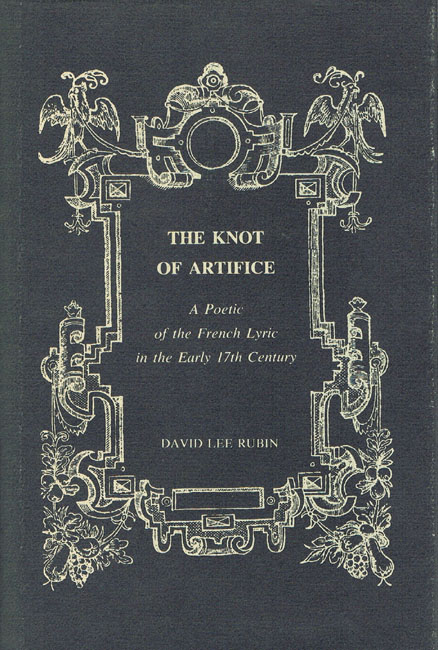The Knot of ArtificeA Poetic of the French Lyric in the Early Seventeenth CenturyDavid Lee Rubin |
 1981 Literary Criticism / European / French 109 pp. 6x9 | |||
|
read the full text of the book •
|
French lyric poetry of the early seventeenth century has long enjoyed a dubious reputation for disunity and disorder. Even its apologists and popularizers—who, in the main, view it from perspectives appropriated from other arts or from extrapoetic disciplines—reluctantly admit or inadvertently confirm that it is an art of incoherence or, at best, of fragmentation. The Knot of Artifice examines critically this widespread conviction, finds it reductive, and proposes and alternative based on a mode of analysis that is differential, inductive, holistic, and, above all else, formal. Proceeding from the assumption that a given lyric may involve a multiplicity of mental and verbal activities (some of them fundamental, others contributory, and still others derivative). Professor Rubin contends that local disruptions and discontinuities may, under close scrutiny, prove to be integral parts of tightly constructed wholes. He assumes, furthermore, that unity need not be sequential or consecutive, and that description, iteration, and proof may be principles of singleness, completeness, and coherence of form. In the book’s five chapters, Professor Rubin examines six apparently disunified poems that are typical of the period’s lyric output, among them Malherbe’s Priere pour le Roy allant en Limozin, Saint-Amant’s Le Mauvais Logement, Théophile de Viau’s Le Matin, and Maynard’s Ode (“Alcipe, reviens dans nos bois”). He argues that by exploiting implied analogy, these poets often drew the fragments of narrations, arguments, and conventional series together into wholes that describe states, assert the recurrence of patterns, or develop proofs by indirection, and maintains that certain nonconsecdutive forms—those that advance by repetition or association—gained in unity by the same means. Concurrently, Dr. Rubin discusses various aspects of the sixteenth century’s handling of narrative, logical, conventional, paratactic, and associative structures, in order to suggest a formal basis of comparison between poems that earlier scholars have called “Renaissance,” “manneristic,” and “Baroque.” In so doing, he offers a fresh and convincing argument for reexamining the French baroque lyric in its own nature. David Lee Rubin is associate professor of French at the University of Virginia, is the author of Higher, Hidden Order: Design and Meaning in the Odes of Malherbe (University of North Carolina Press, 1972) and the coeditor of La Cohérence intérieure: Etudes sur la littérature française du 17e siècle (Editions J. M. Place, 1977). | |||

